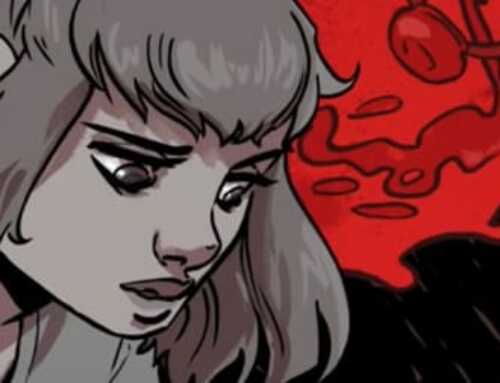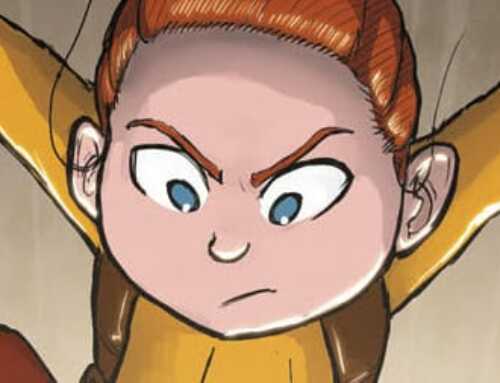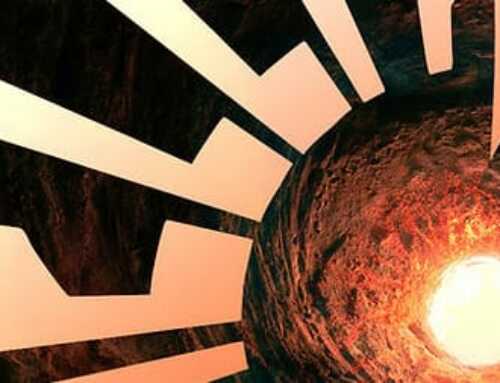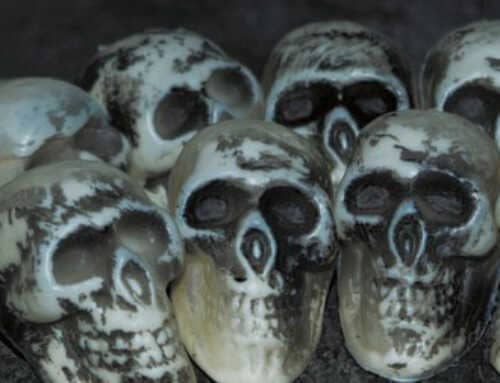We’re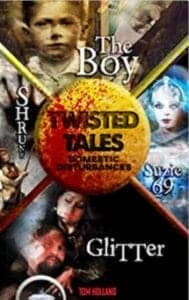 very excited to have had the opportunity to sit down with director Tom Holland of Fright Night and Child’s Play fame to discuss his newest book, Twisted Tales: Domestic Disturbances. The book is a follow-up to his recent Twisted Tales film, offering us four short stories in the vein of Tales from the Crypt and EC Comics. Read on to learn more about the book and Holland’s other recent projects!
very excited to have had the opportunity to sit down with director Tom Holland of Fright Night and Child’s Play fame to discuss his newest book, Twisted Tales: Domestic Disturbances. The book is a follow-up to his recent Twisted Tales film, offering us four short stories in the vein of Tales from the Crypt and EC Comics. Read on to learn more about the book and Holland’s other recent projects!
HorrorBuzz: Between your work on Tales from the Crypt, Amazing Stories, Masters of Horror, and now Twisted Tales, it seems fair to call you a connoisseur of anthology horror. What are some of the anthology series which influenced you? Are there any which you consider underrated that horror fans should be more aware of?
Tom Holland: Yes! John Newland’s One Step Beyond. 1959-1961. It was the first horror anthology (I think) in America. Precursor to The Twilight Zone. I think Newland worked with Hitchcock on his early series of horrors. The other one, almost forgotten today, is Boris Karloff’s Thriller, which aired from 1960-1962. That was a huge influence.
HB: As a follow-up, were there any anthology series that you wish you had been able to contribute to, but never got the chance?
Tom: Nicotero’s Creepshow! Sign me up. But also, The Twilight Zone. I was too young. That, and Alfred Hitchcock Presents.
HB: Beyond the more obvious parallel between genre and format, I think it’s telling that Twisted Tales: Domestic Disturbances and Tales from the Crypt (especially the first three or so seasons) both have such a strong emphasis on spousal relationships. Does this stem entirely from the horror comics which the latter series was based on, or do you think there’s another reason for the connection?
Tom: Good question! I think there’s just so much fertile territory in domestic relationships for conflict. See my “Four-Sided Triangle” with Patricia Arquette on Tales From the Crypt. Or the first one I directed, “Love Come Hack to Me” with Amanda Plummer, which was the third in the series. It all just feels like it stems organically from the idea of trusting yourself in the hands of another person. It’s a terrifying prospect if you really think about it.
HB: For those who may be unaware, Twisted Tales: Domestic Disturbances is a literary follow-up to your previous film, also titled Twisted Tales. What are some of your favorite segments from the movie? Is there a single one which you’re most proud of? Yes, I’m aware that I’m asking you to pick your favorite child.
Tom: I genuinely loved five of them, with my favorite being “Shockwave” with Angela Bettis. The rest, I feel, suffered from production problems known as “lack of money.” I think my favorite from the short story collection might be “Glitter” which I adapted from a screenplay I never got to make. There’s definitely a theme here. Everything we’ve been talking about falls under the banner of “moral tales”, that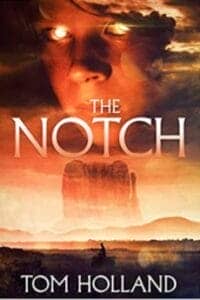 usually come with a lesson at the end. Most anthology tales are that way. It’s especially obvious in Rod Serling’s work. He really set the standard for the form.
usually come with a lesson at the end. Most anthology tales are that way. It’s especially obvious in Rod Serling’s work. He really set the standard for the form.
HB: Putting you on the spot again, if you could adapt only one of the shorts in Twisted Tales: Domestic Disturbances for the screen which would you choose?
Tom: “The Boy,” which I also turned into my first novel, The Notch. Which reminds me, that’s on Amazon right now too, if you’ll allow me a plug within a plug.
HB: The final story in Twisted Tales: Domestic Disturbances is all about artificial intelligence gone too far. Is there any chance you were inspired to explore the concept by the 2019 remake of Child’s Play?
Tom: That would be funny. Life imitating art imitating life. But no, I wrote it before the Child’s Play remake. I understand why they made it, by the way, but I feel like it didn’t pull at the heartstrings in the way my version did. Andy Barclay was an innocent seven-year-old, yearning for a doll that had been cynically marketed by a profit-hungry corporation. The boy lead in the remake was great, but he was what, fourteen years old? Sixteen at the oldest? It’s harder to feel as much sympathy. because that innocence is gone. Once they hit puberty, it’s all over! And that notion – that loss of innocence – had far more to do with what inspired my “AI gone haywire” story.
HB: I imagine it must have been surreal to see Fright Night revisited as a novel. Did you have a lot of direct involvement in the book’s development, or was it entirely conceptualized by coauthors John Skipp and Craig Spector?
Tom: They did it all.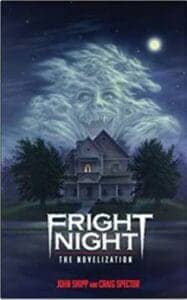 I was working too hard to take part, but I like both of them very much and later, when I read it, I thought they did a terrific job. I don’t think they quite nailed Jerry, but they were working from my original script. And Chris Sarandon had a big part in growing Jerry Dandridge’s character as we worked through rehearsal and filming. During that process, we made the audience understand Jerry better, i.e., the picture he had in his study of Amy from hundreds of years ago, meaning that his true love was always reborn, only to be lost by him. We showed that he was living a curse that was his price for being made a vampire. He would always lose the woman he loved, even as she was reborn again and again. That curse of immortality evolved during the film’s production, so it isn’t really a part of the novelization. And it pleases me to share that there’s more explanation of this aspect of Jerry’s curse in the sequel novel I am currently writing, Fright Night: Resurrection.
I was working too hard to take part, but I like both of them very much and later, when I read it, I thought they did a terrific job. I don’t think they quite nailed Jerry, but they were working from my original script. And Chris Sarandon had a big part in growing Jerry Dandridge’s character as we worked through rehearsal and filming. During that process, we made the audience understand Jerry better, i.e., the picture he had in his study of Amy from hundreds of years ago, meaning that his true love was always reborn, only to be lost by him. We showed that he was living a curse that was his price for being made a vampire. He would always lose the woman he loved, even as she was reborn again and again. That curse of immortality evolved during the film’s production, so it isn’t really a part of the novelization. And it pleases me to share that there’s more explanation of this aspect of Jerry’s curse in the sequel novel I am currently writing, Fright Night: Resurrection.
HB: This might be a bit out of left field, but what was it like narrating Hellraiser: The Toll? You’re no stranger to iconic horror villains, but it must have been a new experience to join one already in progress, so to speak.
Tom: Looking back, I feel like I rushed it, but think I will become a better voice performer the more I do it. If I do more. I hope to do more! But I had a lot of fun doing it. And I want to thank the author, Mark Alan Miller, for the opportunity. I love Clive Barker’s work. He’s one of the few original talents of my generation.
HB: Finally, do you have plans for further Twisted Tales content, or are there any other projects you’re working on right now that you’d like to discuss?
Tom: Well aside from the Fright Night sequel I mentioned, I am also working on a novella called Fright Night: Aftermath Annihilation. It covers what happens directly after the destruction of Billy Cole and Jerry Dandridge. That book is being proofed right now. And as soon as that’s been put to bed, I’ll move on to completing the Fright Night novel sequel. It’s been fun, and also very challenging. I want to thank everyone that has supported Fright Night all these years by giving them something new and exciting to sink their teeth into!
There you have it folks, insights from the man himself along with a preview of coming attractions for Fright Night fans! Keep an eye out for our review of Twisted Tales: Domestic Disturbances.


